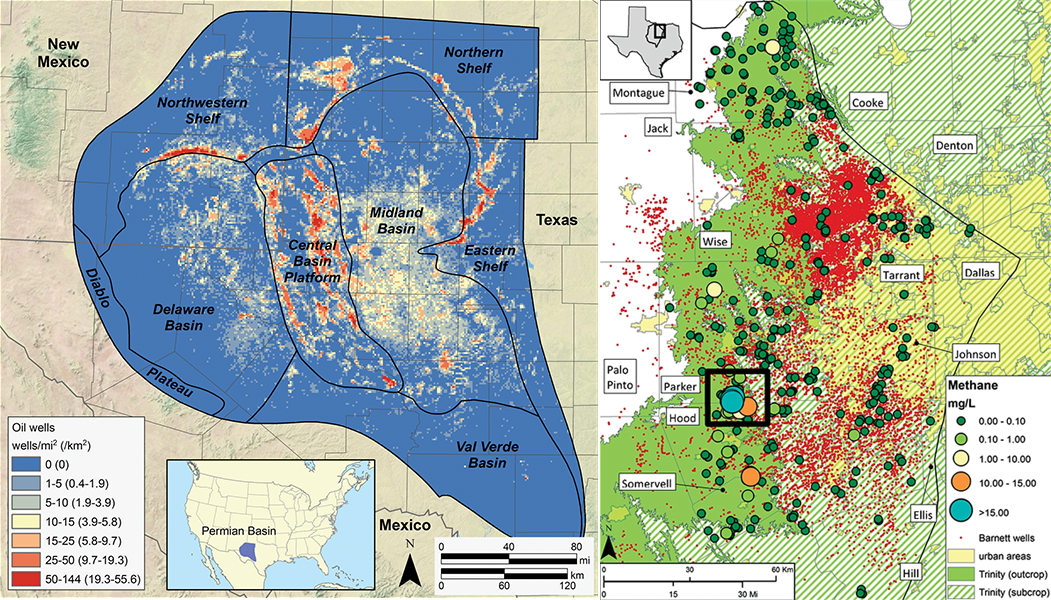Water–Energy Nexus
Leading Water-Use Studies

Bureau of Economic Geology studies range across the broad spectrum of energy, environmental, and energy-economics research. Among the Bureau’s most important areas of study over the past decade have been the interplay between water utilization and energy production, dubbed by some the “Water–Energy Nexus.” Research into this intersection between water and energy resources is vital because both are important for healthy economies and societies. Understanding these connections is also imperative as population grows and these resources become more complicated to manage and utilize.
Among the research completed in 2017 was a study led by Bureau senior research scientist J.‑P. Nicot that found that
high levels of methane in well water from two counties near Fort Worth are probably from shallow natural-gas deposits and not natural-gas leaks caused by hydraulic-fracturing operations in the underlying Barnett Shale.
Another widely read 2017 study conducted by Bureau researchers Bridget Scanlon, Robert Reedy, Frank Male, and Mark Walsh highlights key differences in water use between conventional oil and gas drill sites and “unconventional” sites that use hydraulic fracturing, a practice that is rapidly expanding in the Permian Basin. Results of this study indicate that recycling water produced during operations at hydraulic-fracturing sites could help reduce potential problems associated with the technology.

Above left: Permian Basin and distribution of oil wells in region. (Credit: Bridget Scanlon/UT Austin.)
Above right: Distribution of dissolved methane across the Barnett Shale play (457 groundwater wells). Numerous small red dots represent gas wells. (Credit: J.-P. Nicot/UT Austin.)